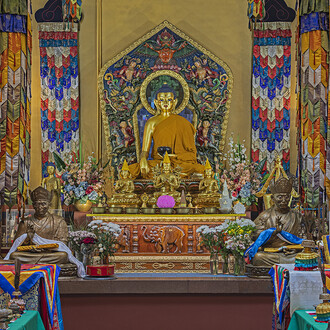Erarta Museum of Contemporary Art presents an exhibition by Ilya Evdokimov whose creative universe sees history not cancelled, but rewritten according to a different set of rules – aesthetic rather than ideological.
Images referencing soviet propaganda posters and ushering in a new world.
More than 20 large-scale canvases, invariably focusing on a free and powerful human being.
An artist who has transformed our collective past into a private and inspiring cosmos.
Ilya Evdokimov’s creative universe is intently focused on the recent past – the conceptual pivot and main source of energy that fuels it. All kinds of past events and occurrences, including not entirely historical, blend in this realm, morphing into a new hymn to the future. Everything here is in constant motion toward light and physical perfection, while the principal character is always a human being – brave, freely soaring, defying gravity.
Ilya’s paintings often foreground figures of athletes, representing a group portrait of sports competitors or participants in an athletes parade. The rest of the pictorial space is covered with smaller outlines of people who seem to have taken flight and frozen in various graceful gymnastic poses. These soaring figures stand for the ‘new Soviet men’ that never came to be. The widely publicised ‘American Dream’ ideal celebrated the middle-class consumerist comforts: a house with a lawn, a private car, a washing machine . . . However, the nascent Soviet state was aiming to cultivate not a well-appointed consumer, but a superhuman – a committed and industrious worker toiling for the public good, although it is an open secret that the ultimate goals extolled by the Soviet art were at variance with reality.
The artist transforms our collective past into a private and inspiring cosmos, a world in which we are no longer reminiscing, but building – and not a utopia, but a new reality in which art functions as the language of the future. A new dimension is given by Evdokimov’s paintings to the notion of alternative history, both as an artistic device and as a philosophical game. His pictures model a world in which Soviet myths have not exhausted themselves, but evolved. Here we see history not cancelled, but rewritten according to a different set of rules – aesthetic rather than ideological. This is not simply a rethinking of the past, but its imagined alternative outcome: more poetic, visually rich, and humane.
















